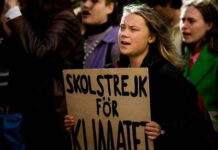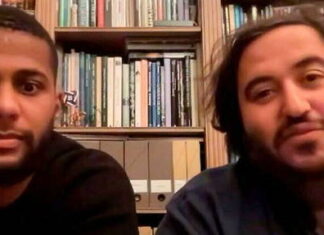Explosive draw at Roland-Garros: Novak Djokovic, world No.1 and holder of the trophy, Rafael Nadal, king of ocher, and the young Spanish phenomenon Carlos Alcaraz all three landed in the same half of the table Thursday, at three days of the start of the Parisian Grand Slam. If the logic is respected, Djokovic and Nadal, current world No.5, will challenge each other in the quarter-finals. Either a round earlier than last year, when the Serb had overthrown the Spaniard, thirteen times winner in Paris, on his beloved land. Potentially, could follow in the semi-final a face-to-face with Alcaraz, the rising star of the circuit, already at the gates of the top 5 at 19 years old. The young Spaniard has just beaten Nadal and Djokovic in Madrid in early May, on the way to his second title in the Masters 1000. A first in the same tournament on ocher.
The protege of Juan-Carlos Ferrero, ex-world No.1 and winner of Roland-Garros in 2003, is having a hair-raising spring: before his dream week in the Spanish capital, he opened his record in Masters 1000 at the beginning of April in Miami , then won in Barcelona. “We have a very dense game with at least two of the big favorites,” said Amélie Mauresmo, who became tournament director at the end of 2021. “Rafael Nadal and Novak Djokovic, for me, are still ahead. Seeing them potentially meet in the quarter-finals is extremely early, she added. I don’t know if I would put Carlos Alcaraz right behind them. »
Having become himself again after a first quarter started by the incredible soap opera of his expulsion from Australia and almost at a standstill, for lack of vaccination against Covid-19, Djokovic is in search on the Parisian clay court of a 21st Grand Slam trophy which would allow him to equal the record held by Nadal since his coronation at the Australian Open in January. The Serb, who has just won in Rome – his first title in more than six months – and who will celebrate his 35th birthday on Sunday, will start his fortnight against the Japanese Yoshihito Nishioka (94th). As for Nadal, much will depend on his left foot, affected for more than fifteen years by an illness which he describes as “chronic and incurable” and which badly betrayed him last week in Rome (elimination in eighths).
Appeared without visible embarrassment in training since his arrival in Paris on Wednesday, the Mallorcan, soon to be 36, will start against the Australian Jordan Thompson (82nd). If Roland-Garros is his second home, “Rafa” arrives there on a precarious dynamic, with only five matches played on clay, the fault of a stress fracture in the ribs which stopped him in his formidable momentum in mid-March. Before potentially joining Djokovic, Nadal could meet the returning Stan Wawrinka in the second round, why not the unpredictable Fabio Fognini in the third round, then Félix Auger-Aliassime (9th). The road seems clearer for the world No.1, promised to Diego Schwartzman (16th) or Grigor Dimitrov (20th) in the round of 16.
Alcaraz, who went through qualifying for his first Roland-Garros a year ago, will face a player from qualifying in the first round. He could meet another young talent, the American Sebastian Korda (21, 30th), in the third round, then in theory, Cameron Norrie (11th) in the round of 16, and the world No.3 Alexander Zverev in the quarter-finals. So far, however, his best Grand Slam result is a quarter-final reached at the US Open last September. Under these conditions, the second half of the table is less raised and seems favorable to the outgoing finalist, Stefanos Tsitsipas (4th). The Greek inherited as potential opponents in the quarters from the Norwegian Casper Ruud, then in the semi-finals from the world No.2 Daniil Medvedev, not very fond of clay and who was beaten by Richard Gasquet in Geneva for his return after an operation. a hernia in early April, or his compatriot Andrey Rublev (7th).
In the women’s draw, the world N.1 Iga Swiatek, on a series of 28 consecutive victories and huge favorite, risks meeting Simona Halep, winner of Roland-Garros in 2018 and ex-world N.1, from the round of 16. . If she crosses the Romanian obstacle, Paula Badosa (3rd) or Aryna Sabalenka (7th) could be waiting for her in the last four. The second half of the table, with the Czech Barbora Krejcikova (2nd), outgoing champion but stopped since February (elbow), and Maria Sakkari (4th), could smile at the Tunisian Ons Jabeur (6th), recently victorious in Madrid and finalist in Rome.


















